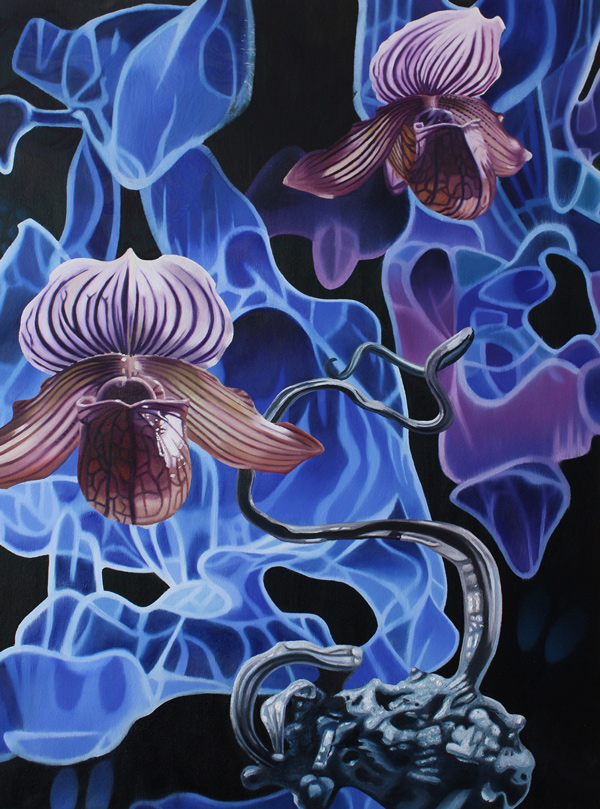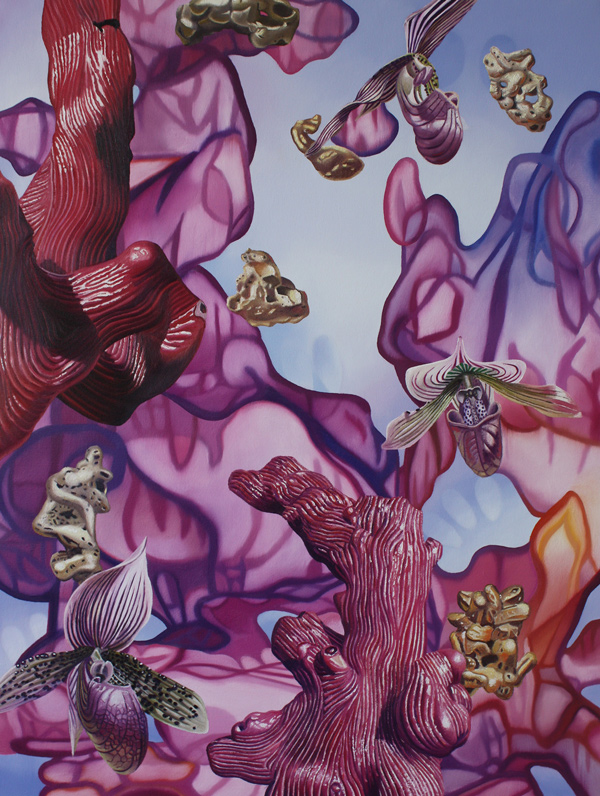Almost always, recognizing something as “beautiful” comes automatically, instantly—handed to you by a long function of evolution, culture and memory. Yet, at much slower rate, observation can generate a more conscious kind of awe, especially in nature, where hidden order unravels infinitely inward.
Through both of these perspectives, Gary Brewer seeks an aesthetic on the periphery of our understanding of the natural world. For example, in his latest show, “Infinite Morphologies,” Brewer paints coral, orchids and other vaguely organic objects adrift in billowy and translucent abstract forms.
If his goal is to prompt questions about the evolution and universality of natural forms, Brewer’s selection of objects is particularly effective. Brewer culls forms from micro- and macroscopic environments and pairs easily-identifiable objects with more ambiguous ones, illuminating curious similarities between disparate forms.

Gary Brewer, The Emergence of Form (2018). Courtesy of the artist and Marie Baldwin Gallery.
The backgrounds in these paintings, according to Brewer, are based on imaging of dark matter, which would fit well into his theme of universality. It’s unclear whether Brewer intended to communicate this through the work, but it seems unlikely that the viewer could understand it without a hint. The backgrounds of his paintings still work, though, as their colors and contours echo the figures in the foregrounds.
In some of these paintings, Brewer includes only these background forms, and experiments with higher color contrasts. But Brewer is at his best with works like The Emergence of Form and Radiant Sublime, which—by including the foreground objects—display a fuller range of Brewer’s technical abilities and provide better arguments for his commentary on universal forms.

Gary Brewer, Constellation (2018). Courtesy of the artist and Marie Baldwin Gallery.
Brewer picks an interesting time to focus on questions of beauty in the natural world. Nature may be art’s oldest subject, but the contemporary art world seems increasingly less interested in questions of beauty, whether by literal representations of nature or by attempts to recombine its patterns to evoke those elusive “automatic” responses.
Admittedly, if slow forces like evolution, culture and memory limit us to what we automatically find beautiful, perhaps art’s challenge is in presenting a new value system to match our exponentially complicating world. But Brewer raises, implicitly, a persuasive response: for every question answered about the natural world, a new, potentially deeper one takes its place.
Gary Brewer, “Infinite Morphologies,” January 6 – February 3, 2019, at Marie Baldwin Gallery, 814 S. Spring Street, Suite 2, Los Angeles, CA 90014. www.mariebaldwingallery.com



















0 Comments